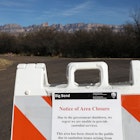
Apr 13, 2024 • 7 min read

Mar 7, 2020 • 5 min read

Can cabin crew really tell if you’re still texting after the announcement to turn your phone off? Aviation journalist John Walton looks into whether there are phone detectors on planes — or not.

“Ladies and gentlemen, all electronic devices must be in flight mode or turned off…”
You tune out from the announcement, because you’ve heard it countless times. But, a few moments later… “We still have four phones, two Kindles and three iPads turned on in the cabin.” You look up. Does the flight attendant really know that your phone is still on?
As a rule, no. There’s no device that’s regularly installed on airplanes that can figure out how many phones, tablets, e-readers or other kinds of device are on in the cabin. Also, as a rule, flight attendants are not psychic and do not have x-ray vision. This whole thing is a big lie from the flight attendants that dates back to that hazy time five or ten years ago when wifi wasn’t really normal on planes, and very few aircraft had been properly tested to make sure that phones, laptops, tablets and e-readers didn’t interfere with their systems.
(While most planes are now fine with most devices in flight mode, this testing requirement is why you’ll occasionally hear instructions to turn everything all the way off.)
Nobody is really sure how or when this big lie started, but it got awfully popular in the US in particular, where scolding passengers is something of a competitive sport for flight attendants. So if you’re a nervous flyer and hear it, please take heart: this is nothing to worry about.
All that said, while there’s no big blinking screen saying “iPhone, seat 28B”, there may be ways that the crew know that someone still has a device active, including if it’s making something on the plane go on the fritz.

The reason devices have to be turned to airplane mode or all the way off is that some of the onboard systems can be affected by interference from phones. The symptoms of this problem are usually pretty similar and well known to the pilots, so the flight deck may ask the cabin crew to make a secondary announcement.
(No need to worry unduly about someone else’s devices if you’ve been a good passenger and turned your devices off, though: interference is rare, and probably wouldn’t affect your flight, but aviation is an industry built on certainty, not probability.)
But there may be a way for the crew to estimate how many phones are in use. They may also be able to turn on the onboard cellular connection — which, at altitude, allows you to connect to the inflight internet connectivity system — and see how many devices autoconnect to it via the mobile network over 3G or 4G. This is largely restricted to larger, longhaul international planes, but to be honest it isn’t really going to be at the top of the crew’s list to do before takeoff. They have an awful lot more to be getting done.
(Oh, and those onboard cellular mobile connections? Those will munch through your data plan faster than you can munch through a croissant on your first morning in Paris, so make sure your data roaming is turned off and — yes — put your phone in airplane mode.)
And if you’re on one of the very latest planes, or a slightly older aircraft that’s just come out of having a new cabin put in, there may be another way for the crew to keep an eye on you: CCTV. Closed-circuit television monitoring has arrived within the cabin, for several reasons, and so the crew may actually be able to see you messaging when you’re not supposed to.

Yes, onboard CCTV cameras have been around for a while around the flight deck — pretty much since the requirement that the doors be strengthened almost twenty years ago — but recently they’ve been making their way into the cabin too.
You probably won’t spot the cameras: they’re often in a small, pinhole style, mounted in a panel at the top of the bulkhead walls. They’re also most often in business and first class cabins, and interestingly enough they’re not really there to monitor passenger behaviour during the flight.
So why are they there? Well, the “business and first class cabin” part might give you a clue: the new increased privacy for these deluxe seats mean that, at times, flight attendants can’t see everyone in the cabin from their cabin crew seats by the doors. (There are some situations in economy where this happens too, especially with the new arrangements for the galley kitchens and lavatories at the back of the plane.)
Since regulations mean that the crew must be able to see into the cabin, enter the CCTV cameras. But even then, they can’t really know you’re online unless they literally see you tweeting or loading pages. So you’re much more likely to get a tap on the shoulder from a flight attendant than to have your name or seat number blared out on the public address system.
So, relax, don’t worry that the plane will be affected because someone has left their device on, and make sure yours — all of yours, including that e-reader and tablet — are in airplane mode or turned off, as directed.
You might also enjoy:
What happens if you don’t put your phone on airplane mode on a flight?
How to get the most out of your devices while travelling


Apr 13, 2024 • 7 min read

Apr 7, 2024 • 6 min read

Sep 30, 2023 • 4 min read


May 4, 2023 • 2 min read

May 1, 2023 • 3 min read


May 3, 2022 • 3 min read

Dec 22, 2021 • 7 min read